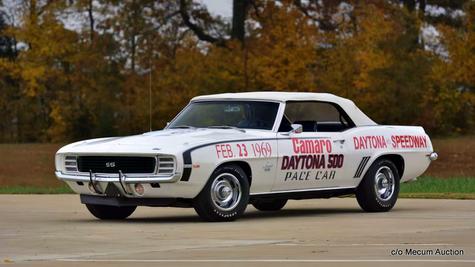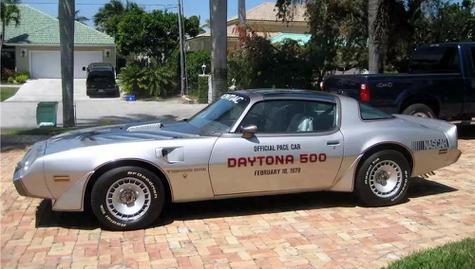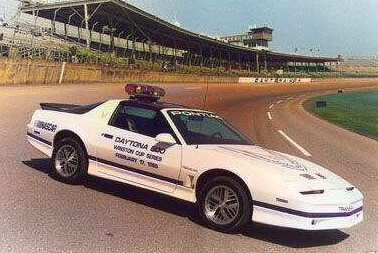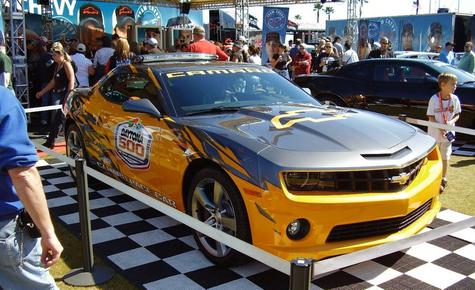The first Daytona 500 pace car was a 1959 Pontiac Bonneville convertible. That was an excellent choice because it packed a 389 cubic inch 260-horse V-8 under the hood—easily enough to get the big Poncho up to lap speed. Better yet, it was a perfect example of maximum ’59 cool factor at Detroit.
NASCAR held the first Daytona 500 Race at Daytona International Speedway Florida on February 22, 1959. It was won by the legendary Lee Petty (father of Richard Petty) driving a 1959 Oldsmobile Super 88 #42 to an incredibly close and historical photo finish victory.
Detroit automakers provided the awesome Pace cars that led racers to the green flag. Pace cars have been a staple of racetracks from the beginning of competition and for a very good reason: They are necessary for the smooth and orderly running of races.
These were the Daytona 500 pace cars and they painted a picture of what was hot in the automotive world at Daytona Speedway. Enjoy! Mario.

1987 Pontiac Firebird Trans Am. Winner Bill Elliott qualified for the pole position at an all-time Daytona record of 210.364 mph. Bill Elliott dominated much of the race in his Ford Thunderbird, leading 104 of the 200 laps. During two different points in the race, he pulled away from the other leaders and was all by himself on the track, leading the first 35 laps, 29 in a row at another point, and the last three.

1995 Pontiac Firebird Trans Am. From 1995–2020, U.S. television ratings for the Daytona 500 were the highest for any auto race of the year, surpassing the traditional leader, the Indianapolis 500. Sterling Marlin became the first driver since Cale Yarborough, and only third overall, to win back-to-back Daytona 500s. This time he drove a Chevy Monte Carlo.

2011 Camaro SS. Since this race marked the tenth anniversary of the death of Dale Earnhardt, the third lap was a "silent lap", meaning the TV and radio announcers were silent during the entire lap, and fans held up three fingers in reference to Earnhardt's car number. Trevor Bayne, at 20 years and one day old, became the youngest Daytona 500 winner ever in his Ford Fusion.












































































Mario on Mar 10, 2025 said:
The first Daytona 500 pace car was a 1959 Pontiac Bonneville convertible. A great choice! And my very First car that I owned was a 1959 Pontiac Catalina Convertible with the same 389 ci V8.
The Daytona 500 Race has been held every year around the 3rd week in February for 67 years and there have been 67 Pace Cars.
Besides the Pace Cars listed I decided to also list all the Winners of each race as well as the cars they drove. This became a very large research project but I was happy to do it for my AT friends. Enjoy, Mario
[Reply to this comment]